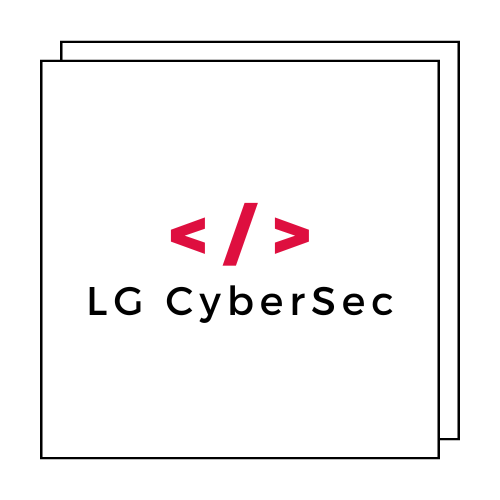A shocking cybersecurity revelation has sent ripples through the digital landscape: over 3,000 YouTube videos have been identified as sophisticated malware traps in what researchers are calling one of the largest ghost network operations ever discovered. This coordinated attack campaign has serious implications for small and medium-sized businesses (SMBs) and everyday consumers who rely on video platforms for business operations, training, and entertainment.
The discovery, recently uncovered by cybersecurity researchers, highlights a disturbing trend where cybercriminals are weaponizing trusted platforms like YouTube to deliver malicious payloads. For SMBs, this represents a critical threat that demands immediate attention and proactive defense strategies.
Understanding the YouTube Ghost Network Operation
The YouTube Ghost Network represents a sophisticated cybercriminal operation that has been operating under the radar for an extended period. Unlike traditional malware distribution methods, this network leverages the trust and widespread usage of YouTube to deliver malicious content to unsuspecting victims.
According to The Hacker News report, the operation specifically targets users searching for popular software tutorials, gaming content, and business-related educational videos. The attackers have created an extensive network of compromised and fake YouTube channels that host seemingly legitimate content.
What makes this operation particularly dangerous is its scale and coordination. The 3,000 identified videos represent just the tip of the iceberg, with researchers suggesting the actual network may be significantly larger. These videos are strategically designed to appear in search results when users look for:
- Software installation tutorials
- Business productivity tools
- Gaming guides and cheats
- Technical troubleshooting content
- Educational and training materials
How the Malware Traps Operate
The ghost network operation employs a multi-layered approach that makes detection particularly challenging. The attackers have developed a sophisticated system that combines social engineering techniques with technical exploitation methods.
The typical attack flow follows this pattern:
Stage 1: Content Creation and Distribution
Cybercriminals create seemingly legitimate YouTube videos that appear to offer valuable content. These videos often feature high production values and professional presentations to build trust with viewers. The content typically promises solutions to common software or business problems.
Stage 2: Malicious Link Distribution
Within the video descriptions, comments, or displayed on-screen during the video, attackers provide links to download “necessary tools” or “additional resources.” These links redirect users to malicious websites hosting infected files.
Stage 3: Payload Delivery
Once users click on these links and download the supposed software or tools, they inadvertently install malware on their systems. This malware can range from information stealers and ransomware to banking trojans and remote access tools.
The Check Point Research team that initially identified this network noted that the operation demonstrates an unprecedented level of coordination and persistence, suggesting the involvement of well-funded cybercriminal organizations.
Critical Implications for Small and Medium Businesses
For SMBs, the YouTube Ghost Network operation presents several critical risks that extend far beyond individual device infections. The implications are particularly severe given how many businesses rely on YouTube for training, marketing, and operational guidance.
Business Continuity Risks
Operational disruption represents one of the most immediate threats. When employees inadvertently download malware while seeking legitimate business solutions, the resulting infections can spread across corporate networks, leading to system shutdowns, data corruption, and significant downtime.
Small businesses, which typically lack extensive IT recovery infrastructure, may face extended periods of operational paralysis. This can result in lost revenue, missed deadlines, and damaged client relationships.
Data Security Vulnerabilities
Many of the malware variants distributed through this network are designed to steal sensitive information. For SMBs, this could include:
- Customer databases and contact information
- Financial records and banking credentials
- Proprietary business documents and strategies
- Employee personal information
- Intellectual property and trade secrets
The theft of such information can lead to regulatory compliance violations, legal liability, and competitive disadvantage in the marketplace.
Financial Impact
According to recent IBM Security research, the average cost of a data breach for small businesses has risen to $2.98 million in 2024. For many SMBs, this level of financial impact could be business-ending.
Beyond direct costs, businesses may face:
- Ransomware payment demands
- System recovery and forensic investigation expenses
- Regulatory fines and legal fees
- Customer notification and credit monitoring costs
- Lost business and reputation damage
Identifying and Avoiding YouTube Malware Traps
Protecting your business from YouTube-based malware requires a combination of employee education, technical controls, and procedural safeguards. Understanding the warning signs can help prevent successful attacks.
Red Flags to Watch For
Train your team to identify suspicious YouTube content by looking for these warning indicators:
- Urgent language: Videos that create false urgency or pressure viewers to act quickly
- External downloads: Content that requires downloading software from third-party websites
- Poor quality channels: New channels with few subscribers but high-view videos
- Suspicious comments: Comment sections filled with fake positive reviews or testimonials
- Generic thumbnails: Low-quality or stock image thumbnails that don’t match the content
- Inconsistent branding: Videos that claim to represent major software companies but lack proper branding
Verification Best Practices
Before downloading any software recommended in YouTube videos, implement these verification steps:
- Official source verification: Always download software directly from the official developer’s website
- Channel authentication: Verify that tutorial videos come from verified or well-established channels
- Cross-reference information: Check multiple sources before following software installation guidance
- Review ratings and comments: Look for genuine user feedback rather than generic positive comments
Comprehensive Protection Strategies for SMBs
Defending against YouTube malware traps requires a multi-layered approach that combines technology, processes, and people. At LG CyberSec, we recommend implementing these comprehensive protection strategies:
Technical Security Controls
Endpoint protection forms the foundation of defense against malware infections. Deploy advanced anti-malware solutions that include:
- Real-time file scanning and behavioral analysis
- Web filtering to block known malicious domains
- Application whitelisting to prevent unauthorized software execution
- Regular security updates and patch management
Implement network segmentation to limit the spread of infections should they occur. This involves separating critical business systems from general-use computers and restricting network access based on user roles and responsibilities.
Employee Training and Awareness
Human factors remain the weakest link in cybersecurity defenses. Develop comprehensive training programs that cover:
- Social engineering recognition and response
- Safe browsing practices for business research
- Incident reporting procedures
- Regular security awareness updates
Consider implementing simulated phishing exercises to test and reinforce training effectiveness.
Policy and Procedure Development
Establish clear acceptable use policies for video platforms and software downloads. These policies should specify:
- Approved sources for software downloads
- Authorization requirements for new software installations
- Procedures for vetting educational content
- Incident response protocols for suspected infections
Emergency Response and Recovery Planning
Despite best prevention efforts, SMBs must prepare for potential security incidents. Develop and regularly test comprehensive incident response plans that address malware infections.
Immediate Response Actions
When malware infection is suspected, implement these immediate response steps:
- Isolation: Immediately disconnect affected systems from the network
- Assessment: Determine the scope and nature of the infection
- Communication: Notify relevant stakeholders and authorities as required
- Documentation: Preserve evidence for forensic analysis and legal requirements
Partner with cybersecurity professionals like LG CyberSec to ensure rapid and effective incident response capabilities.
Business Continuity Planning
Develop robust backup and recovery procedures that enable business operations to continue during security incidents. This includes:
- Regular, tested data backups stored offline
- Alternative communication and operational procedures
- Vendor and customer communication plans
- Financial contingency planning for recovery costs
Future-Proofing Against Evolving Threats
The YouTube Ghost Network operation represents just one example of how cybercriminals are evolving their tactics to exploit trusted platforms. SMBs must adopt a forward-thinking approach to cybersecurity that anticipates and prepares for emerging threats.
Threat intelligence plays a crucial role in staying ahead of evolving risks. Subscribe to cybersecurity threat feeds and maintain awareness of current attack trends affecting your industry. Organizations like the Cybersecurity and Infrastructure Security Agency (CISA) provide valuable resources for staying informed about current threats.
Regular security assessments help identify vulnerabilities before attackers can exploit them. Consider quarterly security reviews that evaluate:
- Network architecture and access controls
- Employee security practices and awareness levels
- Software inventory and update status
- Incident response plan effectiveness
Building a Security-First Culture
Long-term protection against sophisticated threats like the YouTube Ghost Network requires more than technical solutions—it demands a fundamental shift toward a security-first organizational culture.
Leadership commitment drives successful cybersecurity programs. Business owners and managers must demonstrate their commitment to security through resource allocation, policy enforcement, and personal participation in security training.
Regular communication about security threats and best practices keeps cybersecurity top-of-mind for all employees. Consider monthly security newsletters, team meetings that include security discussions, and recognition programs for employees who demonstrate good security practices.
At LG CyberSec, we understand that cybersecurity can feel overwhelming for small and medium businesses. Our approach focuses on practical, cost-effective solutions that provide comprehensive protection without overwhelming your team or budget.
Conclusion: Taking Action Against YouTube Malware Threats
The discovery of 3,000 YouTube videos functioning as malware traps in a coordinated ghost network operation serves as a stark reminder that cybercriminals are constantly evolving their tactics. For SMBs, this threat represents both an immediate danger and an opportunity to strengthen overall cybersecurity posture.
The key to protection lies in understanding that cybersecurity is not a one-time implementation but an ongoing process that requires continuous attention, adaptation, and improvement. By combining robust technical controls with comprehensive employee training and clear operational procedures, businesses can significantly reduce their risk exposure.
Take action today to protect your business:
- Audit your current cybersecurity measures and identify gaps
- Implement employee training programs focused on social engineering recognition
- Deploy comprehensive endpoint protection across all business devices
- Develop and test incident response procedures
- Establish relationships with cybersecurity professionals for expert guidance
The YouTube Ghost Network operation demonstrates that no platform or service can be considered completely safe from cybercriminal exploitation. However, with proper preparation, training, and technical controls, SMBs can effectively defend against these sophisticated attacks while continuing to leverage the benefits of digital platforms for business growth.
Don’t wait for an attack to realize the importance of comprehensive cybersecurity. Contact the experts at LG CyberSec today to discuss how we can help protect your business against evolving cyber threats and ensure your digital operations remain secure and productive.

